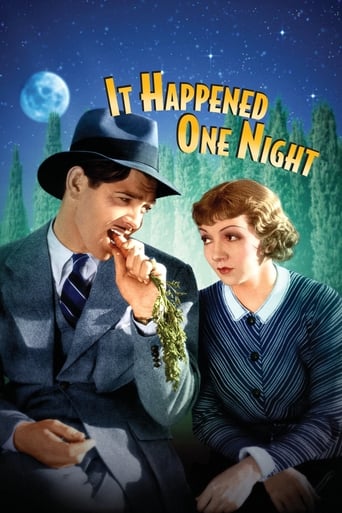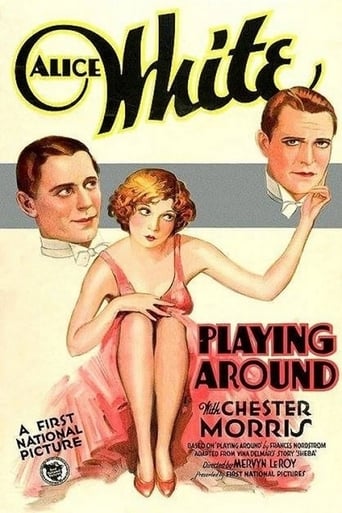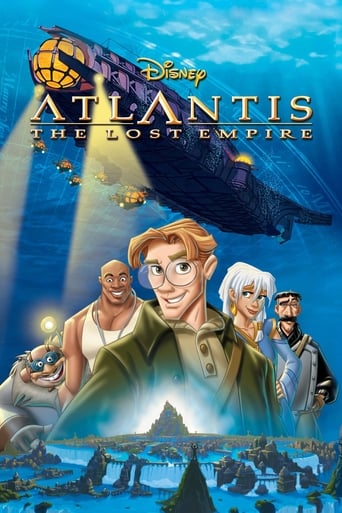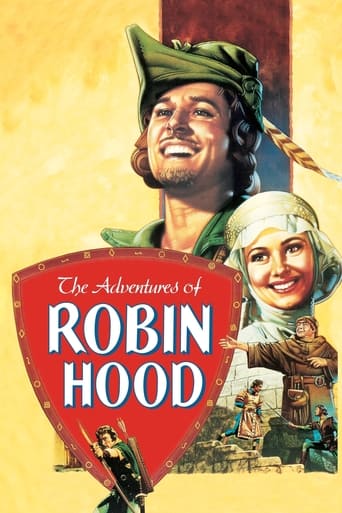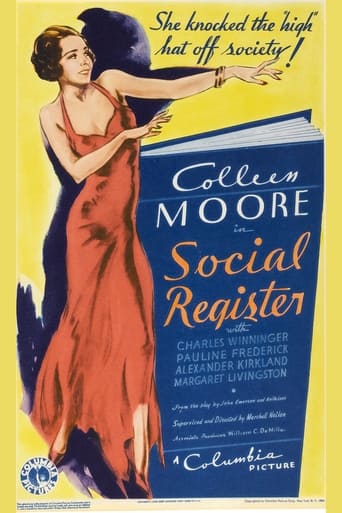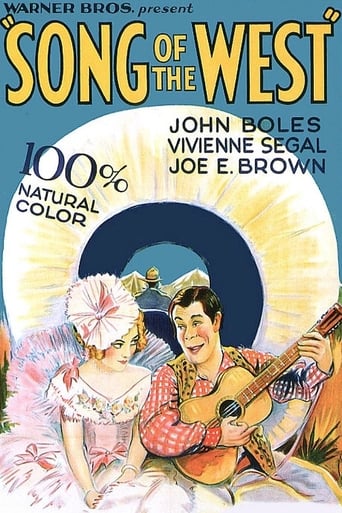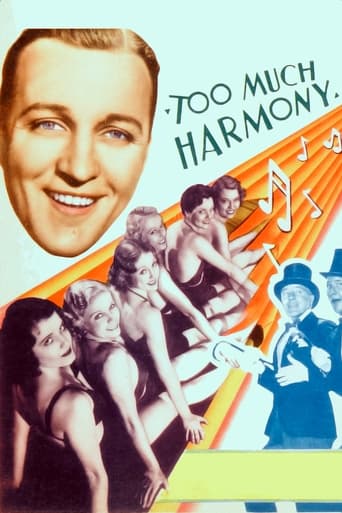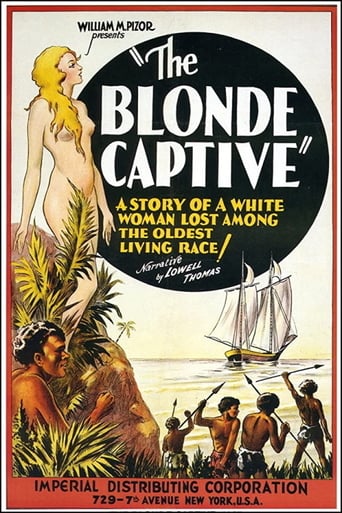

The Blonde Captive (1931)
An expedition is sent into the rugged Australian outback to search for a lost white woman.
Watch Trailer
Cast
Similar titles


Reviews
Fanciful, disturbing, and wildly original, it announces the arrival of a fresh, bold voice in American cinema.
The film makes a home in your brain and the only cure is to see it again.
Excellent and certainly provocative... If nothing else, the film is a real conversation starter.
This movie tries so hard to be funny, yet it falls flat every time. Just another example of recycled ideas repackaged with women in an attempt to appeal to a certain audience.
You know from the moment that this Lowell Thomas docudrama begins that it is going to be exploitation at its most frustrating. Thomas sits in a room with other men and tells them about the journey he took from the United States to Australia in search of the missing link, the mysterious neanderthal. Pictures from a book show an approximation of what these early humans may have looked at, comparing them to apes and to what Thomas refers to as the lower element of human beings. It is obvious from the start that this film will be used as an excuse for the white man to visit various "exotic" locations as a family would visit a zoo, and it truly exploits the natives of Hawaii, the Samoa's, Fiji, New Zealand and some of the remotest parts of Australia to make them look truly ridiculous. "Who is the blonde captive?", you might ask, and I'm still asking the same question now that I've seen the film, but one more important question, "Why?"As much as I hated this film, there were some interesting visuals of wild life, including giant sea turtles, cute koalas (which are not really as friendly with humans as they look with the shot of one man pretty much covered by them) and of course kangaroo's. I couldn't bear to look at the shot of a turtle's heart beating after being removed, so be forewarned if you choose to put yourself through watching this. As for the footage of the natives, they are somewhat respectful in Hawaii, but as the natives get darker, so does the racism and the cracks at their expense, often tacky and always insulting. There's no attempt to understanding that traditions of these people have sustained them for years, and the natives (particularly the practically naked women) don't seem to realize how exploited they were simply to make Thomas and his crew feel more superior to them. It is that element which makes this film a disgusting example of white superiority that I hope has dwindled in the 87 years since this film was made.
This fascinating movie provides an interesting visual record of the peoples of various islands in the South Pacific, but it provides just as interesting a record of the attitudes many whites had toward non-white races and primitive cultures back in the early 1930s. The movie follows a group of archaeologists who set out to find examples of modern Neanderthals among the Aboriginal people of Australia. It's narrated by world traveler and news broadcaster Lowell Thomas. The movie has some scientific and historic merit with its documentary footage of the native people of the various places the expedition travels to. But it ultimately has a rather leering and exploitative feeling and includes plenty of footage of topless native women.At first I was amused by the supposedly humorous narration that is typical of this kind of travelogue and by the political incorrectness of the narration. But soon the comments got pretty offensive as Thomas literally compares the attractiveness of the women of one race to another. Some of Thomas' statements are fairly jaw dropping. He calls the caveman-like Aboriginal tribe they eventually find "human life in its lowest form" and makes several unflattering remarks about their physical appearance.The "blonde captive" element finally arrives toward the end of the movie when the group spots a young white boy at a ceremonial dance and a tribesman wearing a woman's slip around his waist. Here you'll hear the phrase,"Great Caesar's Ghost" exclaimed years before it was ever uttered by Perry White in Superman comics. They investigate and discover the boy's mother, a white woman dressed only in a loincloth, who was supposedly shipwrecked and found by the tribe many years before. Now she lives primitively as the wife of the bushmen. Thomas wonders, "How did this daughter of the lordly Caucasian come to be the wife of cave-dwelling man?" This last segment has the feeling of being staged and included for pure sensationalism so it's hard to tell how much of it was real.There are other scenes in the film involving animals that might be hard to watch. We see a turtle's heart that keeps beating for hours after it is removed and a sea cow that is cut up for eating. But despite the offensive and exploitive elements, the questionable scientific claims and the suspect nature of the scenes involving the "blonde captive", this nature film is, at times, an interesting and unusual curio from over 80 years ago.
This bizarre, exploitive documentary is typical of its time with narrator Lowell Thomas making racist wisecracks and other inane jokes throughout. A quasi-educational travelogue peppered with frequent views of semi-clad native girls from Bali to Australia. And what about the so-called blonde captive? In the last few minutes we meet a semi-clad blonde lady and her son living with an Aboriginal tribe. She is not a captive so the title makes no sense. She was supposedly marooned there many years ago and has no desire to return to civilization. However, this segment feels fabricated. Either way, this is an interesting and peculiar curio from the past that reveals more about archaic Western attitudes than native culture.
This horrible film begins with the writer and world traveler, Lowell Thomas, giving a boring and inaccurate lecture to scientific types about Neanderthal Man. Then, inexplicably, a LONG series of stock footage of Pacific natives is shown--while Thomas makes incredibly inane comments. Much of it is meant to be funny (it NEVER is) and some is rather racist and paternalistic. He also makes a comments about how unattractive Fijian women are in comparison with Polynesian women and how grotesque a young Aboriginal boy is! His comments about the Aboriginals are by far the meanest comments, as he seemed to think they were barely human. During so much of this portion of the film, the native women are naked or half-naked. It seems like the film really isn't the least bit educational but just a sleazy excuse to show naked people (some of which looked underage)--and avoid local censor boards since it's couched as an 'educational film'! At least it has some cute footage of Koalas and kangaroos! Later, the folks in the footage begin tormenting turtles!! This section of crappy footage continues on and on and on forever...or so it felt.But, what about the blonde woman of the title? When does this come into this long and dull documentary? She makes her appearance at 68 minutes into the film--and the film is only 73 minutes long!!! This supposed blonde lady is naked and quite chunky--and once again, she seems to be an excuse to show bare flesh for audiences who otherwise might have had little opportunity to see such explicit footage. And, following this footage, the film ends....and the audience is left wondering why the film was called "The Blonde Captive". A better title might have been "A very dull documentary with nasty, lame narration...and boobies"! Overall, a wretched film in every possible way. Not worth your time and bearing no resemblance to the very salacious movie posters that accompanied this pile of dreck."...here is human life at its lowest form" (referring to residents of the Timor Sea).

